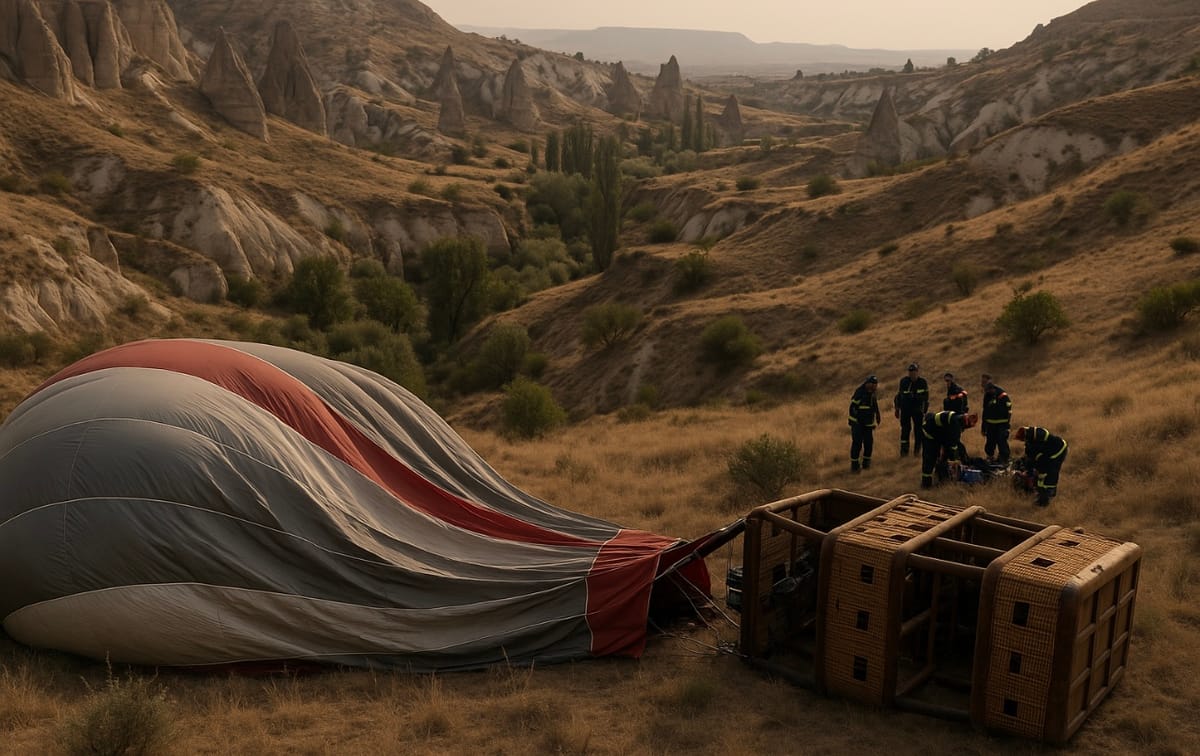Aksaray Hot Air Balloon Tragedy: The Dark Side of Turkish Tourism
The hot air balloon tragedy in Aksaray, Turkey claimed a pilot’s life and injured dozens. Discover the causes, chronology, and risks.

The hot air balloon tragedy in Aksaray, Turkey has once again exposed the hidden risks of hot air balloon tourism, which is often seen as safe and exotic. The fatal accident in the Ihlara Valley on June 15, 2025, claimed one life and left many injured, mostly foreign tourists. This incident not only leaves deep sorrow but also highlights the urgent need for stricter regulation and oversight in the extreme tourism industry.
Chronology of the Hot Air Balloon Tragedy in Ihlara Valley
That morning, the atmosphere in Ihlara Valley was normal. Groups of tourists boarded hot air balloons to enjoy the unique landscape of Aksaray, a popular destination in central Turkey famed for its ancient rock formations and Cappadocia-like panoramas. However, joy quickly turned to disaster when sudden strong winds struck.
According to Associated Press, two hot air balloons were forced into emergency landings. In one balloon, the pilot fell from the basket, became entangled in the ropes, and was crushed by the basket, dying instantly. Nineteen tourists, most of them from Indonesia, were injured. In another balloon, twelve Indian tourists were also injured.
Causes and Risk Factors of Balloon Accidents
The Governor of Aksaray explained that the accident was triggered by sudden wind shear, one of the biggest dangers in hot air ballooning. Extreme weather conditions are often unavoidable, even if operators try to maintain safety standards. However, this tragedy shows that safety procedures and pilot training must be further improved.
Hot air balloon tourism in Turkey is very popular, especially in Cappadocia and Aksaray. However, several similar accidents have occurred before. In 2022, a crash in Cappadocia killed two Spanish tourists. A major incident also occurred in Luxor, Egypt in 2013. These facts reinforce the importance of strict oversight and regulation in every hot air balloon flight.
Emergency Response and Ongoing Investigation
After the incident, emergency teams quickly evacuated the victims and brought the injured tourists to the nearest hospital. Turkish authorities immediately launched a thorough investigation to determine the exact cause, focusing on weather factors, pilot competence, and the balloon’s technical condition. The investigation results are expected to serve as a basis for regulatory improvements, such as mandatory real-time weather monitoring and grounding procedures during high wind risk.
Impact on Turkey’s Hot Air Balloon Tourism Industry
The impact of this tragedy is felt not only by the victims and their families but also by Turkey’s tourism industry. Tourist confidence, especially from Asian countries such as Indonesia and India, is predicted to decline. Balloon tour operators are being pressured to be more transparent about safety protocols, while the government is compelled to take strategic steps to strengthen oversight.
On the other hand, this incident serves as a reminder that the appeal of extreme tourism must always be balanced with maximum protection and safety. Operators must work together with regulators and tourism associations to ensure safety standards are met, and educate tourists about potential risks.
The Need for Strict Oversight in Hot Air Balloon Tourism
The Aksaray hot air balloon accident is a stern warning for the tourism industry in Turkey and worldwide. Safety standards and weather monitoring must be enhanced. By prioritizing education and transparency, it is hoped that tourists can continue to enjoy Turkey’s stunning landscapes without risking their lives.





Comments ()